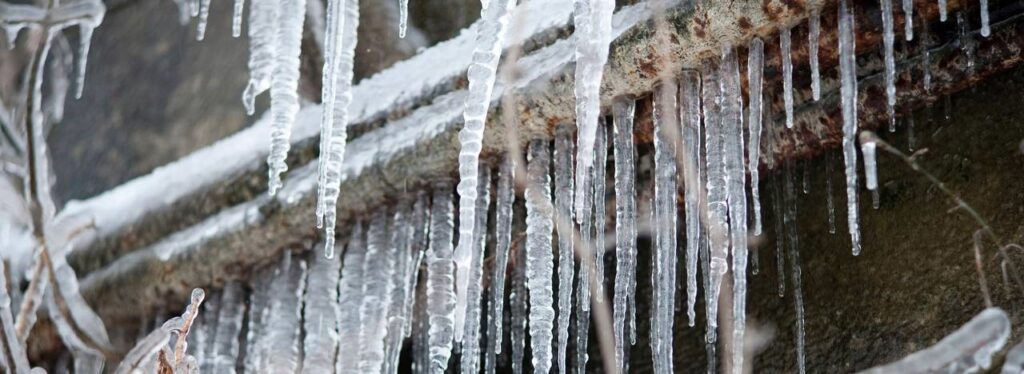Ways to Protect Pipes from Freezing: Expert Tips
Ways to Protect Pipes from Freezing: Expert Tips
Blog Article
Were you searching for info around 6 Ways to Prevent Frozen Pipes?

Cold weather can ruin your plumbing, specifically by freezing pipes. Right here's just how to avoid it from occurring and what to do if it does.
Intro
As temperature levels drop, the risk of icy pipes rises, possibly bring about pricey repairs and water damage. Recognizing just how to prevent frozen pipelines is important for property owners in cool environments.
Avoidance Tips
Insulating at risk pipelines
Cover pipes in insulation sleeves or use warm tape to safeguard them from freezing temperatures. Concentrate on pipes in unheated or exterior areas of the home.
Heating strategies
Keep indoor areas effectively heated up, particularly locations with pipes. Open up closet doors to allow cozy air to circulate around pipelines under sinks.
How to determine icy pipelines
Try to find lowered water flow from taps, unusual smells or sounds from pipes, and noticeable frost on exposed pipes.
Long-Term Solutions
Architectural modifications
Take into consideration rerouting pipes away from exterior wall surfaces or unheated areas. Add added insulation to attics, basements, and crawl spaces.
Upgrading insulation
Buy high-quality insulation for pipelines, attic rooms, and walls. Appropriate insulation assists keep regular temperatures and decreases the risk of icy pipes.
Protecting Outdoor Plumbing
Garden tubes and exterior faucets
Detach and drain yard hose pipes before winter months. Set up frost-proof faucets or cover exterior taps with protected caps.
Recognizing Icy Pipelines
What causes pipelines to ice up?
Pipelines ice up when revealed to temperature levels below 32 ° F (0 ° C) for extended durations. As water inside the pipelines freezes, it expands, putting pressure on the pipeline wall surfaces and possibly triggering them to burst.
Risks and problems
Icy pipelines can cause supply of water interruptions, residential or commercial property damages, and expensive repairs. Burst pipes can flooding homes and create substantial structural damages.
Signs of Frozen Pipes
Recognizing frozen pipelines early can stop them from breaking.
What to Do If Your Pipes Freeze
Immediate actions to take
If you suspect frozen pipes, keep faucets open to ease pressure as the ice melts. Utilize a hairdryer or towels soaked in warm water to thaw pipes gradually.
Verdict
Protecting against icy pipelines calls for proactive measures and quick feedbacks. By comprehending the causes, indicators, and preventive measures, homeowners can protect their pipes throughout winter.
5 Ways to Prevent Frozen Pipes
Drain Outdoor Faucets and Disconnect Hoses
First, close the shut-off valve that controls the flow of water in the pipe to your outdoor faucet. Then, head outside to disconnect and drain your hose and open the outdoor faucet to allow the water to completely drain out of the line. Turn off the faucet when done. Finally, head back to the shut-off valve and drain the remaining water inside the pipe into a bucket or container. Additionally, if you have a home irrigation system, you should consider hiring an expert to clear the system of water each year.
Insulate Pipes
One of the best and most cost-effective methods for preventing frozen water pipes is to wrap your pipes with insulation. This is especially important for areas in your home that aren’t exposed to heat, such as an attic. We suggest using foam sleeves, which can typically be found at your local hardware store.
Keep Heat Running at 65
Your pipes are located inside your walls, and the temperature there is much colder than the rest of the house. To prevent your pipes from freezing, The Insurance Information Institute suggests that you keep your home heated to at least 65 degrees, even when traveling. You may want to invest in smart devices that can keep an eye on the temperature in your home while you’re away.
Leave Water Dripping
Moving water — even a small trickle — can prevent ice from forming inside your pipes. When freezing temps are imminent, start a drip of water from all faucets that serve exposed pipes. Leaving a few faucets running will also help relieve pressure inside the pipes and help prevent a rupture if the water inside freezes.
Open Cupboard Doors
Warm your kitchen and bathroom pipes by opening cupboards and vanities. You should also leave your interior doors ajar to help warm air circulate evenly throughout your home.
.jpg)
As a keen person who reads about How to prepare your home plumbing for winter weather, I imagined sharing that excerpt was a great idea. Sharing is caring. Helping others is fun. Thanks a lot for going through it.
Click Here! Report this page